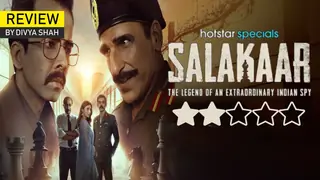Gorbund is a famous folk song which describes the process of preparing a decorative string for a camel, Rajasthan's traditional mount. The song express the beauty in innocent labour. The composition is particularly moving when sung to the rhythm of Kaharwa. The enjoyment of this song is hundred percent when sung to this raga. The other folk songs are 'Indhani', 'Lawarji', 'Jallo', 'Hichaki', 'Olyun', 'Sapno', 'Kurjan' etc. The tunes of these song are melodious and fast that even the rendering of their first times over a stringed instrument makes the audience ecstatic.
Rajasthan has a number of communities whose hereditary profession is to sing for the entertainment of others. Among them are the Dholis (both Hindus and Muslims), Dhadhis, Mirasis, Mangamars, Fedalis, Kalawats and Qawwals, Tangas, Patars and Kanchari (Hindu and Muslim prostitutes), Nats, Rawals and Bhawais. These communities have contributed to the preservation and popularisation of Rajasthani folk songs.
THE RAGAS
The raga's most widely used in Rajasthani folk songs are Bilawal, Kafi, Desh, Khamaj and Peelu. Some in their pure forms and others in combinations. Many folk songs are tuned in Bilawal and Kafi. The folk songs of Rajasthan have maintained the elements of Indian classical music despite the fact that they are freely composed and sung, knowing no rigid rules. Classicism in music have been framing and improving its form with the help of folk-songs. The famous Mand style singing in Rajasthan is a typical example. This style is very important in folk-songs and it is well recognised in classical circles also. Mand is neither accepted as a full-fledged raga nor is it reckoned among the freely rendered folk songs. Mand goes very near the thumri or the ghazal. Mand is the exclusive contribution of Rajasthani folklore to the classical music of India.
THE TAL
In Indian music Tal unites the listener with the singer in the rhythm and ecstasy of music. The various ragas and raginis are rendered in accordance with the tempo of the tal differentiated by means of matras ranging from six to sixteen. No classical music composition can be rendered without tal. In Hindustani classical music, the Tal is provided by the tabla, pakhawaj or mridang. Folk music also requires tal for its effective rendering and the instruments used for it are many including the dhol (drum), dholak, nagara, majira, chang and daf. Rajasthani folk-songs make use of six, seven or eight matras of tal on the dholak, tabla and nagara. The Kaharwa tal is generally played on the daf or the chang. The musical instruments used with folk song help to keep the tal which occupies in music, the same place as grammar does in language.
BHAJANS AND BANIS
Bhajans and Banis are devotional folk songs which are very popular among the Harijans, Chamars, Bhanghis, Balais and Rahgars. Bhajans and Banis are sung to the accompaniment of the ektara, dholak and majiras, in night-long gatherings. Banis are often prolonged by means of an alap. It lends seriousness to the line and helps the audience grasp its meaning. The Bhajans composed by Mira Bai, the great devotee of Krishna are sung with special devotion in Rajasthan.






























